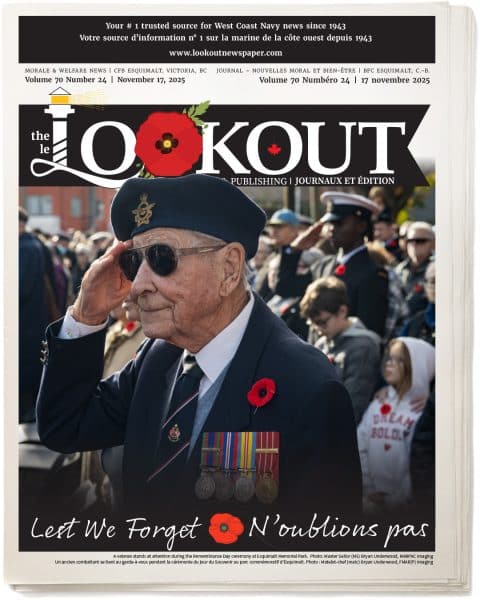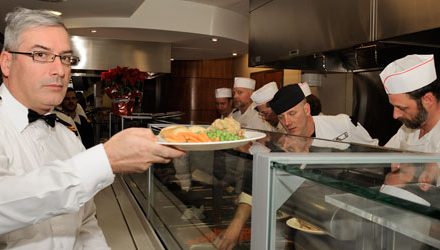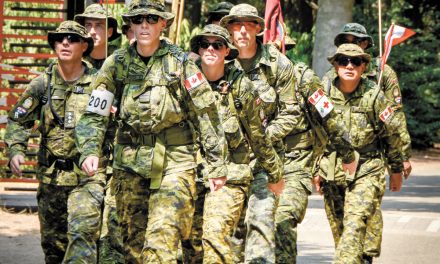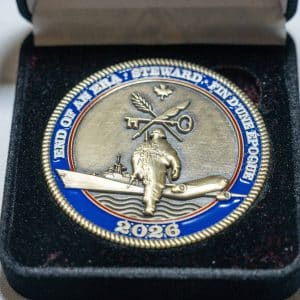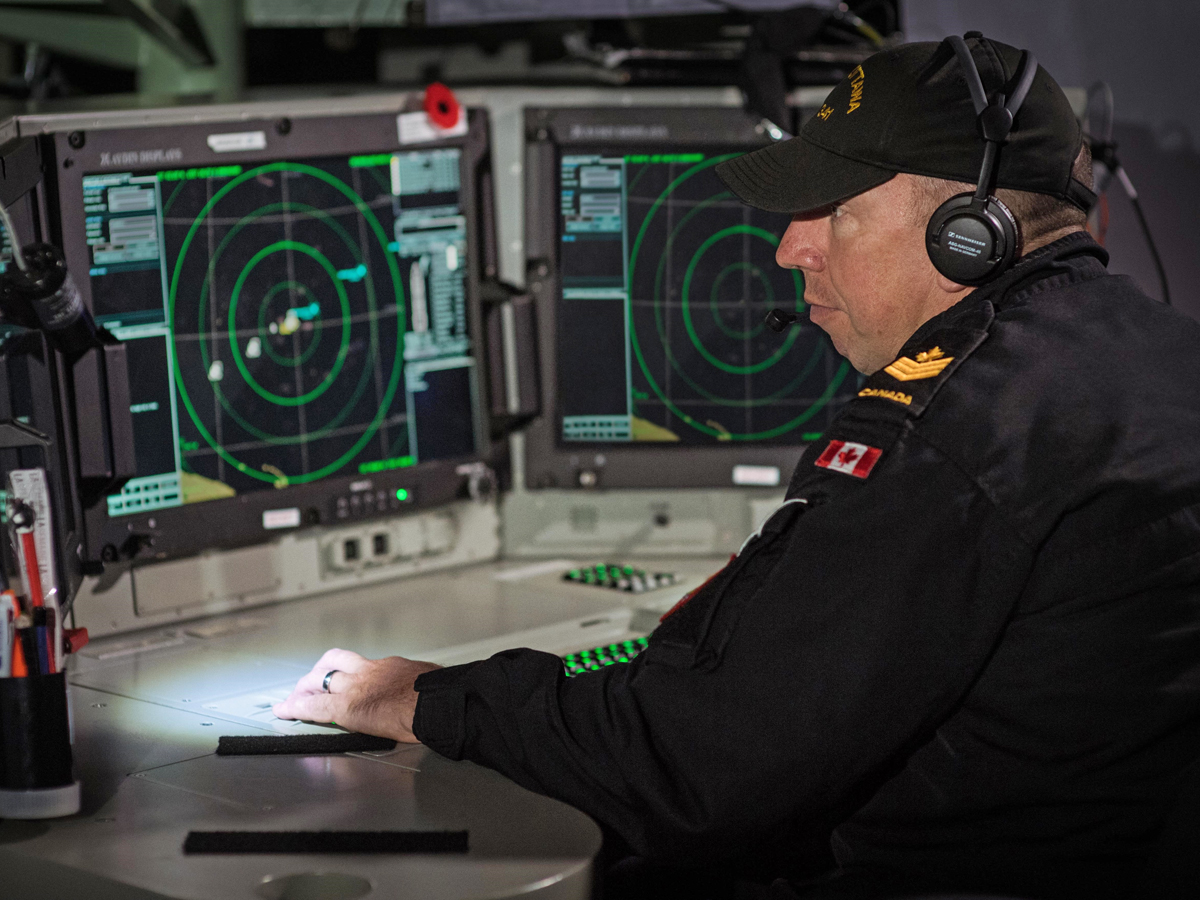
PO2 Sebastien St-Pierre monitors the Senior Sonar Operator Console aboard HMCS Ottawa.
Photo by LS Victoria Ioganov, MARPAC Imaging Services
Capt Jenn Jackson, HMCS Ottawa PAO ~
It is one thing to listen, but for Sonar Operators listening is an art form.
That is because they have to interpret what they hear to determine what is occupying the waters surrounding their vessel; particularly if that “what” may be an enemy submarine.
With 2020 marking the 75th anniversary of the Battle of the Atlantic, Sonar Operators today continue to be the core of naval anti-submarine warfare.
Developed in the early 20th century, and initially used for anti-submarine warfare at the latter part of the First World War, sonar became a cornerstone for convoys by allowing them to detect enemy submarines during the Battle of the Atlantic.
Ally convoys were under constant threat and often attacked by U-Boat “Wolf Packs”, and early detection of enemy submarines often meant the difference between crucial supplies and personnel reaching Britain or being lost to the sea.
“Being a sonar operator means I have to always be looking beyond,” says Petty Officer First Class Joseph Rempel, Senior Sonar Operator in HMCS Ottawa. “You have to set yourself up for success. Know where you think the submarine is and if you locate it, be able to anticipate its movements to track it.”
A small specialized trade, sonar operators (SonarOps) are employed in both the Halifax-Class frigates and Victoria-Class submarines, with the majority working in the surface fleet. All SonarOps receive the same core occupation training, but approximately one or two choose to complete submariner training following their basic qualification course. In the end, the work is similar, but the environment is extremely different.
“The initial trade course for a SonarOp is approximately four months and focuses on acoustic analysis, oceanography, and learning to use the equipment – both the Canadian Towed Array Sonar System and the Hull-Mounted Sonar,” adds PO1 Rempel. “Following that, operators complete an On-the-Job Performance Record package while working in a ship and applying the principles learned on course in practical scenarios.”
Ordinary Seaman Trent Smith and Ordinary Seaman Donald Legg are two of HMCS Ottawa’s junior SonarOps, having completed their basic trade course prior to joining the ship and deploying on Operations Projection and Neon. The deployment has given them both opportunities to practice their skills during the three multi-national exercises included in the deployment – all of which had a large anti-submarine warfare component.
“The exercises during this deployment brought everything together for me,” says OS Legg. “I realized how prepared I was when all of a sudden a line popped up out of nowhere on my screen. I recognized its significance and it was shortly after that it was confirmed as a submarine we were looking for. It was a big adrenaline rush to switch from searching to hunting and knowing my work contributed to our success.”
“It is very rewarding and a huge sense of accomplishment when you find something,” echoes OS Smith. “We are always looking for a needle in a huge haystack, but once you find it, the trick is not to lose it again in the hay – you have to track it.”
Both agree the most interesting part of their basic trade course was the focus on acoustic analysis, but both also agree it was the most challenging aspect as well.
“There is a lot of information to digest when it comes to learning acoustic analysis,” says OS Smith. “In a way, it is like learning a code language – from the sounds you hear and see on your screen you learn to analyse it to determine what type of vessel it is based on things like how many propellers you hear, and even what type of engine it is running.”
Acoustic analysis starts with first gaining a basic understanding of oceanography – a little-known aspect of being a SonarOp.
“Listening is one thing, but before we can listen we have to know and understand where to put our sensors, and what limitations they will have,” says PO1 Rempel. “Knowing how sound will travel through the water where we are located involves analyzing factors such as the type of ocean floor, depth, and seawater temperature. An interest in oceanography is an asset for a SonarOp.”
Upgrades to the underwater warfare suite in the navy’s frigates were announced in early 2019, a change that will further enhance SonarOp capabilities that are challenged at times by the limitations of current systems.
Hardware challenges aside, it is the SonarOp community itself where the wealth of knowledge is kept and shared. As their work is intricately related to underwater warfare tactics, the majority of it is classified to maintain operational security. That means members are unable to go into details of their work with friends and family. SonarOps make up for that by sharing knowledge and lessons learned within their trade.
“We are a small trade, but we are a big community,” says PO1 Rempel.
If you would like to know more or are interested in the becoming a SonarOp check out https://forces.ca/en/career/sonar-operator/ or contact your local Canadian Armed Forces Recruiting Centre.
